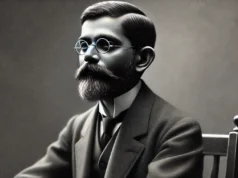
The tribal-indigenous communities of Northeast India (NEI) are communitarian societies. It means that the concerns and interests of an individual are shaped and influenced by community relationships. It means that their faith practices interface with their social practices. There is no dichotomy between secular and sacred. This is the case in their traditional socio-religious beliefs and practices.
However, the North-East region also practised individualistic faith (or individualism) due to various factors, which brought about denominational practices. That said, the narrative and implication of the second sign in John 4:43-54 confront such cultural assumptions.
In the previous article, I attempted to do a contextual-theological reading of John 2:1-11. It talks about how Jesus averted a possible social disaster of a poor family. He displayed to His disciples that He is “the Son of God” (cf., 1:19; 2:11). The current article looks at the second sign and suggests that faith practices ought to be located in the context of the community of believers i.e., it confronts an individualistic approach to faith.
Jesus’s Cleansing Of The Temple
Jesus resumes his journey from Judea to Galilee and receives a warm welcome from the Galileans (Ramsey 2011). The reception Jesus received was conditional i.e., they were interested in miracles (cf. vv. 44-45; Kostenberger 2013). Like the Galileans, the tribal-indigenous communities (whether in the past or present) are fascinated by miracles or signs. Common believers are influenced by dreams and visions that are proclaimed to them by the self-proclaimed visioners (i.e., such roles are traditionally associated with local priests).
The Galileans had also gone to the Passover festival; they had witnessed what Jesus did in Jerusalem (v. 45). This was likely a reference to the overturning of the tables in the temples where merchants and religious leaders/institutions had misused the place of worship for financial benefits (Keener 2003). They had abused their position and influence in the community for their personal gain.
Because of such misuse of power and authority, “many Galilean pilgrims to the temple were annoyed at the way the temple establishment or merchants acted” (Keener 2003). Jesus’s cleansing of the temple – which was a reaction to the unjust system of the time – was greatly appreciated by the common people, including the Galileans.
Trusting In God Not Signs
What transpired in Jerusalem set the tone for the second sign. Many people had heard about Jesus – and what he could do. Hence, when Jesus returned to Cana, the place where the first sign occurred, a certain royal official came searching for him. There was a tone of desperateness in his search for Jesus.
As the royal official approached Jesus, He said “Unless you see signs and wonders you will not believe” (v48). But unlike the Galileans, the royal official was not interested in signs and wonders.
Jesus’s rebuke appears to be directed to the people at large; the Greek term “you” in verse 48 is plural (Carson 1991). The rebuke about relying only on signs and wonders is pertinent for the tribal-indigenous communities who also tend to rely on dreams, visions, or omens even in the contemporary context. While God may speak from these channels, over-relying on it can result in a lot of confusion or bring fatal consequences (e.g., over-dependence on local healers, instead of doctors).
Even when Jesus seems to point out about people’s need to see miracles, the royal official kept on persisting to “come down before my little boy dies” (v49). His son was dying, and he wanted Jesus to heal him. His way of approaching Jesus to heal his son was not very different from how Jesus’s mother asked him to avert a possible social disaster. Seeing his persistence, Jesus assures the royal officer that his son will be healed.
A Distant Miracle
The royal officer believed in what Jesus said and he went home. While he was on his way home, he was met by his slave who came bearing the news of his son’s good health. His son had recovered from the point of death. When the official inquired about the time of his recovery, it was the same time when Jesus said, “Your son will live” (v50a).
Here, Jesus performed the second sign. The words of Jesus were enough to heal the royal official’s son. To the one who had nothing to do with signs and wonders, Jesus chose to perform a distant miracle. As he healed the royal official’s son, Jesus showed Himself as the One who can give life and withhold death.
A Communitarian Response To The Christian Faith
In response, the royal official and his household believed in Jesus. This was a cultural practice of the first century where the whole household would follow the faith practices of the head of the family (Keener 2003). While some patriarchal norms are being challenged, the households of the tribal-indigenous communities share similar faith practices with the first-century believers. This is to suggest that socio-religious practices in NEI (North-East India) are always associated with the lives of the community. The idea of personal faith or individualistic faith practices are alien to the tribal-indigenous communities.
The expression – “he himself believed, along with his whole household” (c53b) – was a formal act of religious commitment (Michaels 2010). This expression also corresponds with similar events in the book of Acts (cf. 11:14; 16:15; 16:31–33; also 18:8). The second sign serves as the precedence for the early Christians to follow – and also for us to adapt. When we look at the history of Christianity in NEI, we will find stories of communitarian response to the Christian faith. Whether we live in the North-East region or elsewhere, the communitarian tribal-indigenous community ought to retain and practice the communitarian aspect of the Christian faith. This can be in the form of being rooted in a believing community, attending to others’ needs, practice of giving and hospitality, and so on.
Photo by Akashanthoney From Wikimedia Commons







